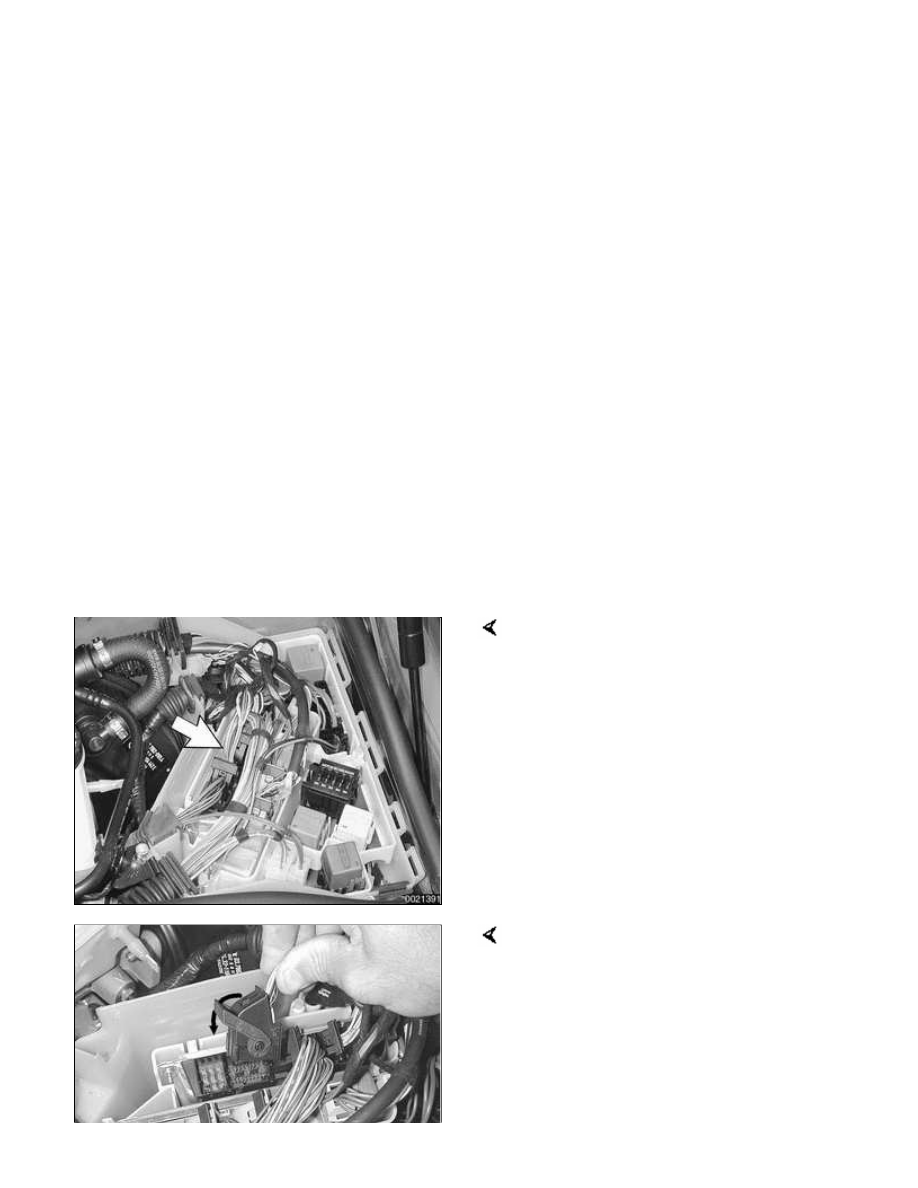BMW 3 (E46). Manual - part 88

Note:
Replacement ECMs must be coded with
application information (i.e. engine
code, transmission type, etc.) prior to
installation. Consult an authorized
BMW dealer before replacing the ECM.
Alternatively, coded ECMs may be
available at an additional cost.
-
Disconnect negative (-) battery
cable. Wait at least three minutes.
CAUTION!
Prior to disconnecting the battery,
read the battery disconnection
cautions given at the front of this
manual on page viii.
-
Remove E-box cover at left rear of
engine compartment. Cover is
retained with four captive screws.
ECM (arrow) is located in right rear of
E-box, as identified with five electrical
harness connectors.
Disconnect ECM harness connectors
by releasing lock on each plug and
pivoting lever. Pull all five connector up
and off ECM.
-
Remove ECM from retaining
brackets and pull from its holder.